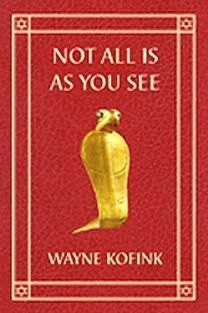THE LAST OF ADVENT
I’m posting a day early because Thursday, December 17 marks first of the last seven days of Advent. Since around the sixth century the Christian Church in the west has recognized these last days by using what are called the Great O Antiphons with the Magnificat at Vespers. Vespers is the evening prayer service. The Magnificat is the song Mary sang in Luke 1:46-55: “My soul doth magnify the Lord.” An antiphon is a short verse sung before and after a psalm or a canticle like the Magnificat. The seven for the ending of Advent are called the “O Antiphons” because each one starts with the word “O”.
Here are the seven antiphons in English translation with the Latin title which is the first two words of the antiphon.
17 December - O Sapientia - O Wisdom
O wisdom, coming forth from the Most High, filling all creation and reigning to the ends of the earth; come and teach us the way of truth.
18 December - O Adonai - O Lord of Lords
O Lord of Lords, and ruler of the House of Israel, you appeared to Moses in the fire of the burning bush, and gave him the law on Sinai: come with your outstretched arm and ransom us.
19 December - O Radix Jesse - O Root of Jesse
O root of Jesse, standing as a sign among the nations; kings will keep silence before you for whom the nations long; come and save us and delay no longer.
20 December - O Clavis David - O Key of David
O key of David and scepter of the House of Israel; you open and none can shut; you shut and none can open: come and free the captives from prison, and break down the walls of death.
21 December - O Oriens - O Morning Star
O morning star, splendour of the light eternal and bright sun of righteousness: come and bring light to those who dwell in darkness and walk in the shadow of death.
22 December - O Rex Gentium - O King of Nations
O king of the nations, you alone can fulfil their desires: cornerstone, binding all together: come and save the creature you fashioned from the dust of the earth.
23 December - O Emmanuel
O Emmanuel, our King and Lawgiver, hope of the nations and their saviour: come and save us, O Lord our God.
Each antiphon address God by a different title and asks him to come–that’s what Advent means.
Recently I discovered something odd about the antiphons. If you arrange the Latin titles in reverse order, the first letters after the O forms a Latin acrostic
O Emmanuel
O Rex gentium
O Oriens
O Clavis
O Rex gentium
O Adonai
O Sapientia
ERO CRAS
Which means “I will be tomorrow” and indeed the day after the last antiphon is Christmas Eve.
Last comment. Some sharp people will have found the O Antiphons familiar even though they haven’t used them. In the middle ages they were arranged into a hymn with a refrain. We know it in English as O come, O come, Emmanuel.
O come, O come, Emmanuel,
And ransom captive Israel,
That mourns in lonely exile here
Until the Son of God appear.
Rejoice! Rejoice!
Emmanuel shall come to thee, O Israel.
It’s time to pray now so I have to go. Maybe I’ll try singing the antiphon in Latin. Then again, it’s been a while since I had to read Gregorian chant notation.
Doesn’t matter. God understands every language and even no language.
May the Lord bless you on your journey and greet you on your arrival.
Wayne
12399
Labels: Advent, O Antiphons














